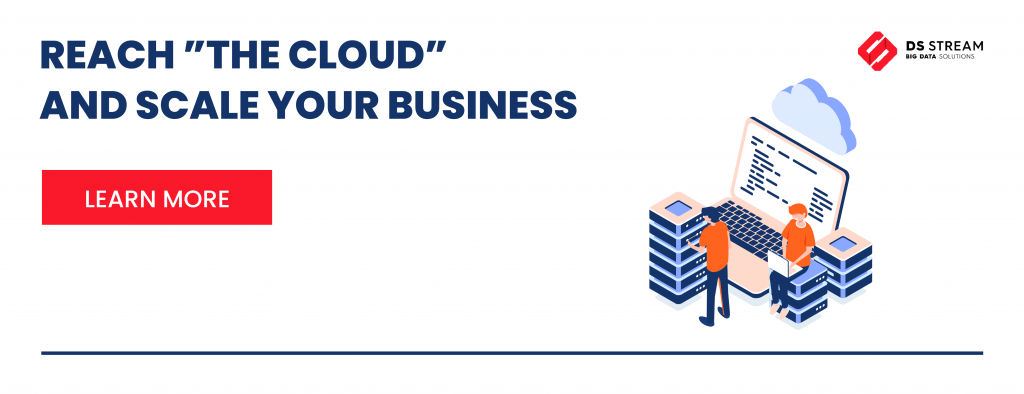
-
8 September 2021
- Cloud Computing
Each business is different and requires specific tools, especially when it comes to IT solutions. There are many factors that should be taken into consideration when choosing a cloud data warehouse. You have to determine whether the tools you plan to use in your company fit your existing data analytics infrastructure and what the costs are, just to name two.
Big Data and Analytics are very important for modern companies, which seek to become more data-driven. Although data related processes can be handled on premise, yet more and more IT organisations choose to handle them in the cloud. It ensures high scalability and flexibility and therefore answers the demand for a robust platform that can efficiently accommodate the huge amounts of data. This article introduces two cloud solutions: Azure Synapse from Microsoft and BigQuery from Google. Check out what the advantages and drawbacks are of using each of them.
Data warehouse platforms – what key features should be compared?
When it comes to choosing IT solutions for business, betting on the wrong tools can be an expensive mistake and as a result can make you less competitive. Therefore, when considering a cloud solution for handling processes related to huge amounts of data you should always compare a few aspects such as mentioned below.
Architecture and costs
You can use one of two types of computational models to query and access data in a cloud data warehouse. Resource provisioning is the first kind, in which a user provisions a cluster of nodes based on individual computational requirements. A company only pays for the resources that it actually uses, and it is possible to scale up or scale down when necessary. In the second, serverless model, the cloud provider takes care of operational tasks and provisioning the resources, so the user pays for the amount of data processed by his or her queries.
Data security and compliance
Various types of data, whether related to providers, customers or employees, require protection and security. A company needs to ensure that sensitive data is organized and managed among others due to the business requirements and to the regulations of each country. Data warehouses assure security for their clients by using different methods (for example, various types of encryption or data security).
Administration and maintenance
Having business IT tools that are easy to use results in efficiency. Some of them can be difficult to maintain, which can lead to developing additional costs for the company. By choosing a resource provisioning model, you’ll take a lot of tasks on your shoulders (for example you’ll need to make decisions about necessary CPU or storage levels), while in the case of a serverless model there is no need for an administrator to deal with issues such as scaling, because the platform providers manage all resources and automate scalability.
Performance and scaling
The ability to scale up or scale down efficiently is important for cloud data warehouse performance, but it is also very important to have the option to separate storage and computing. Why is this the case? Storage costs in the cloud are reasonable, but in comparison, computing costs can be quite high. More flexible solutions allow their users to scale storage and computing separately, which enables companies to reduce costs.
Now, let’s have a look at Google’s BigQuery and Microsoft’s Azure Synapse to check which one is the best solution for your organisation.
BigQuery vs. Synapse – is one more affordable than the other?
Prices of IT solutions change frequently – that is why there is no point in mentioning them here. You can always check BigQuery pricing on their official site. Do the same to learn more about the costs of using Synapse. Both platforms use different pricing models.
The pricing model depends on the architecture. Google’s DWaaS (data warehouse as a service) solution follows the serverless approach. There is no need for the final business user to provision clusters or any other resources. As with BigQuery, you don’t have to worry about architecture and scaling as it is automated, your administrators would have an easier job to do. It has two pricing options for on-demand model uses and a query-based pricing model for computing resources – in this case the customer is charged for the amount of data processed in queries. You also have to pay for data storage. BigQuery also supports the “Flex Slots” feature, which can save your money by switching your billing to flat-rate pricing for defined time windows.
Similarly, Azure Synapse Analytics offers serverless data warehouse services, although it is not primarily a serverless data warehouse. You can use either serverless or dedicated resources. Users only pay for the capabilities they opt in to use and starting in August 2021 there will be some new additional costs for using extra features like Managed Virtual Network, etc. In the original version, Microsoft charged for compute nodes (data warehouse units). On the other hand Synapse Analytics integrates very well with Azure environment and with the help of Polybase and Spark technology, it allows to integrate multiple types of data sources.
Which is easier to maintain, administrate and scale – BigQuery or Synapse?
Administrators of both of these data warehouses can assign roles and permissions to users.
There is a matter of scaling the computing and storage resources. In the past, if you had chosen the Synapse dedicated resources option, the data warehouse required some attention from the administrator when scaling was necessary. BigQuery enabled independent computing and storage resource scaling.
Currently, both data warehouse platforms ensure smooth, separate scaling of storage and computing resources. That is possible because they come with managed columnar storage solutions that allow companies to store data outside of the cluster. BigQuery takes care of the scaling “under the hood” and Synapse enables organisations to scale computing power up or down to handle changing workloads.
In the case of Synapse, you are charged when the cluster is running. It is understandable that you may not want it to run all the time – 24/7. Microsoft’s solution lets you pause and later resume clusters when you need it, but it requires additional coding in order to automate the process. There is no need for that if you use BigQuery, because you only pay for executed queries.
Cloud data warehouse platform performance and security
Both Synapse and BigQuery enable administrators to manage users’ roles and permissions, which improves security. You can be sure that Google takes care of your data safety through Google Cloud Platform’s Virtual Private Cloud Service Control. At the same time, Azure Synapse has some built-in features that keep your data safe like automated threat detection & always-on data encryption. Both platforms use encryption. BigQuery comes with Advanced Encryption Standard (AES) and Synapse uses Transparent Data Encryption (TDE).
They are able to scale up and down when required by the company, and they perform well even under heavy loads. Those platforms handle structured and semi-structured data of different types with great performance. BigQuery’s ability to autoscale surely makes things easier, but with some coding done by your administrator, you can make Synapse serve your needs just as well as BigQuery.
To sum up
Both Synapse and BigQuery have great performance and scalability capabilities and are capable of handling massive volumes of data for analytics. Integration with analytical tools and machine learning platforms will not cause you problems. It is not easy to choose the right data warehouse platform, especially as there are many popular solutions that could meet your business needs. If you are still not sure which offer would suit your expectations best, contact us – we can advise you on that matter and help you implement new solutions.
Check out our blog for more in-depth articles on Cloud Computing:
- What is Big Query, and how can it support your analytics?
- SaaS vs PaaS vs IaaS – how to choose the right Cloud Service
- How to build serverless applications. Best practices and tips



